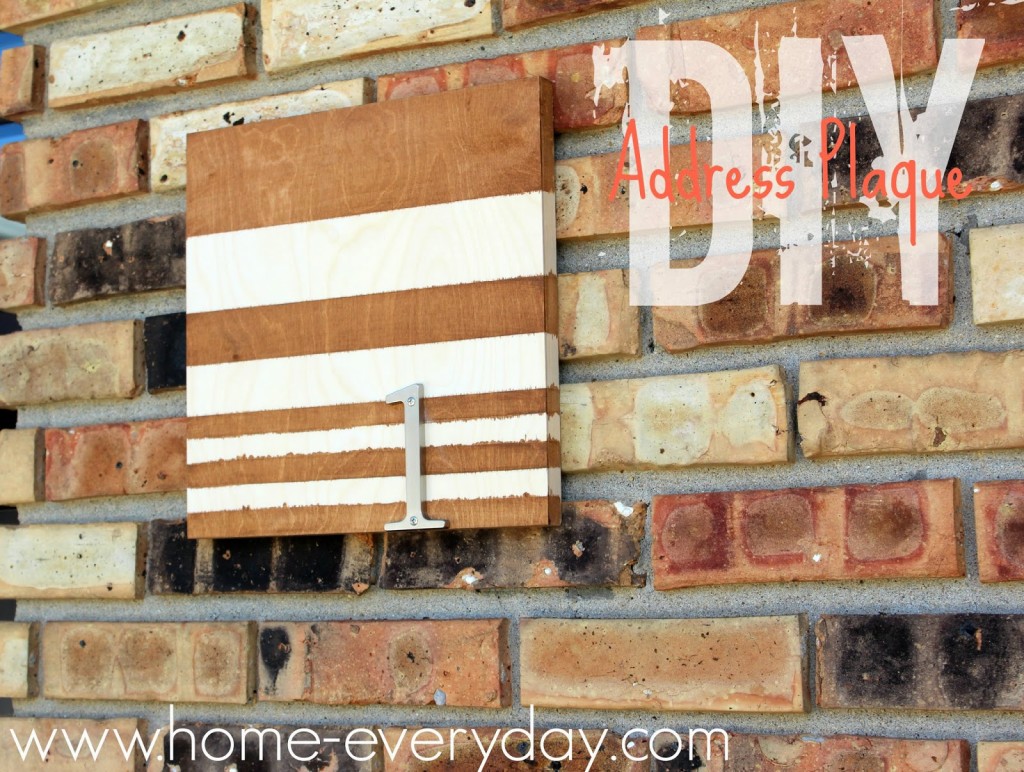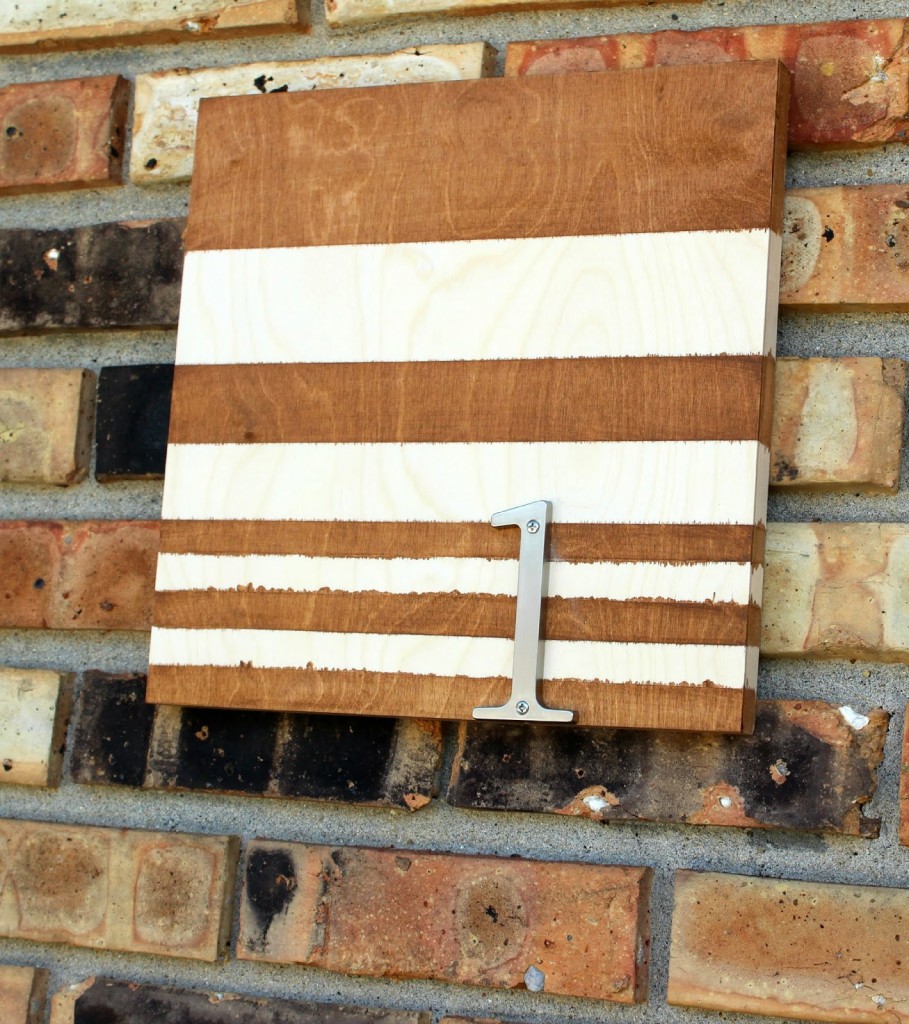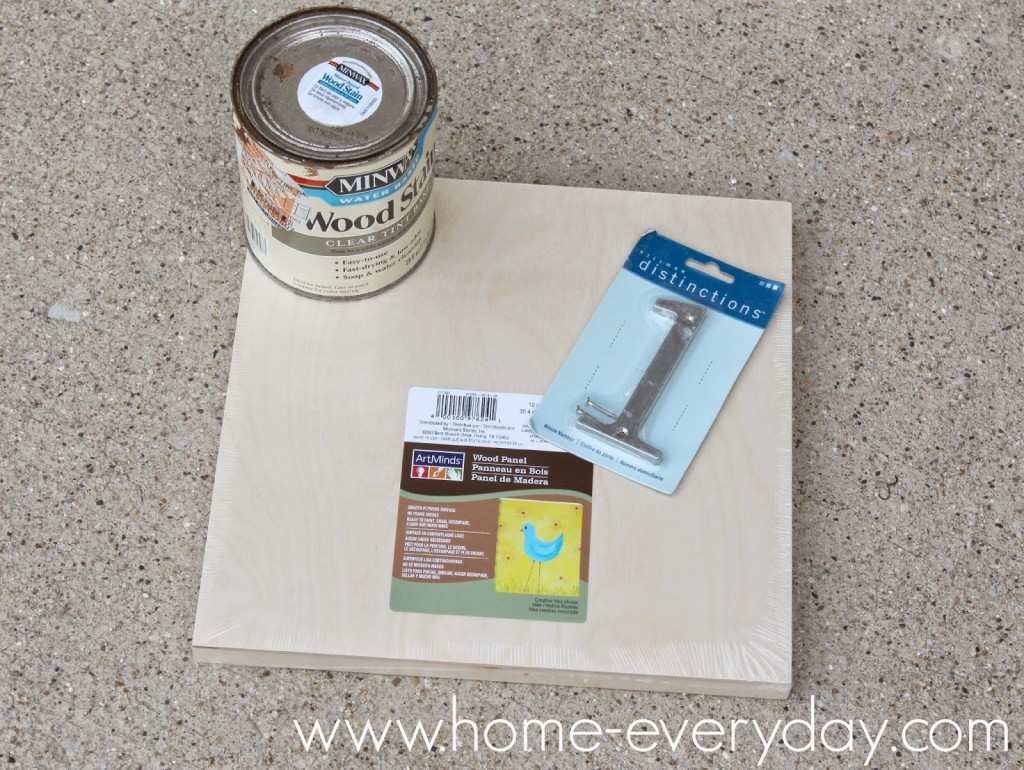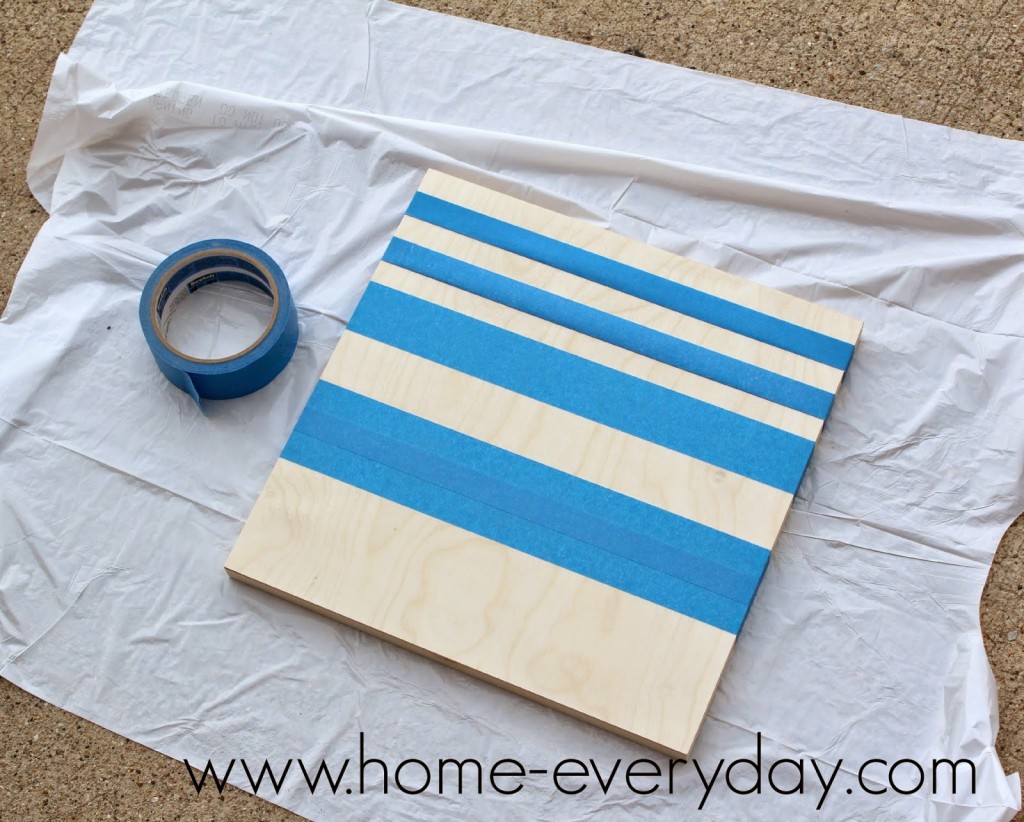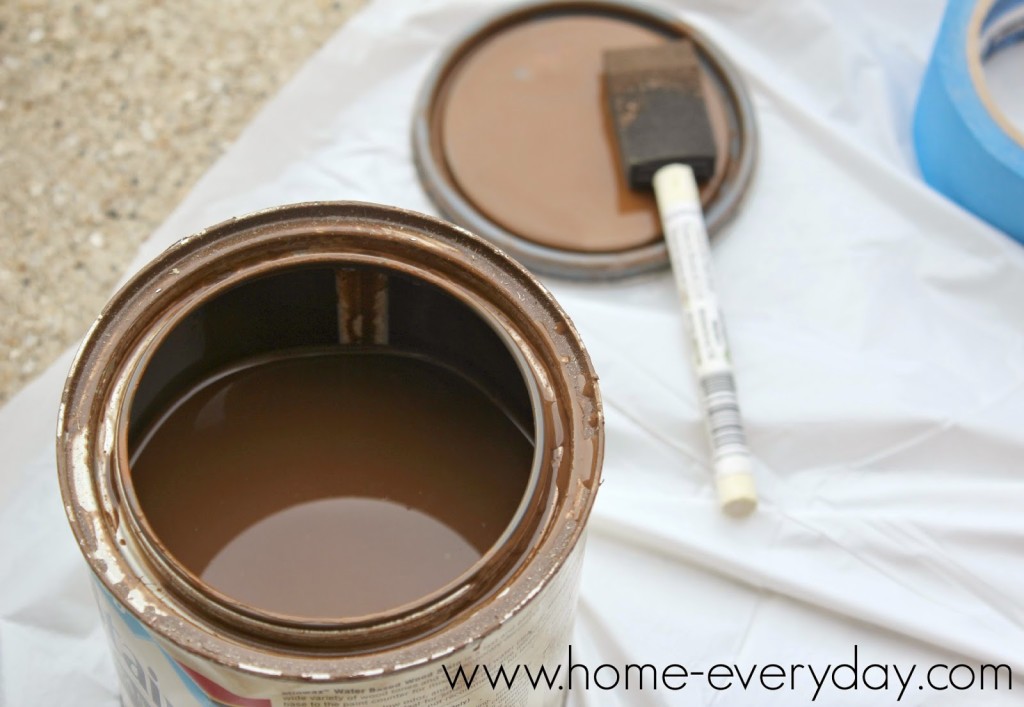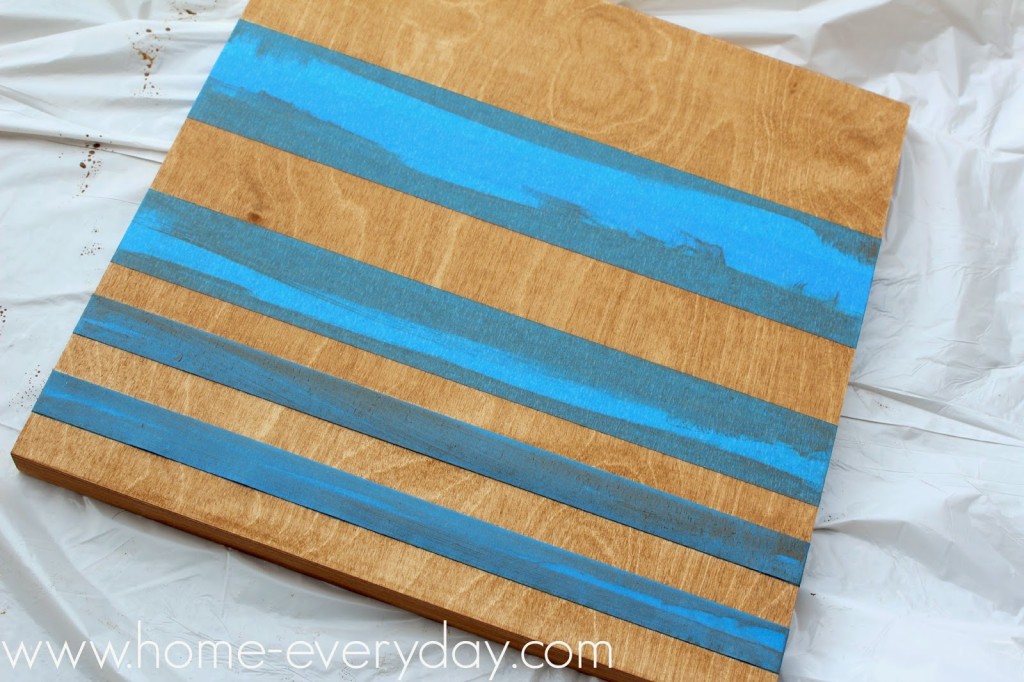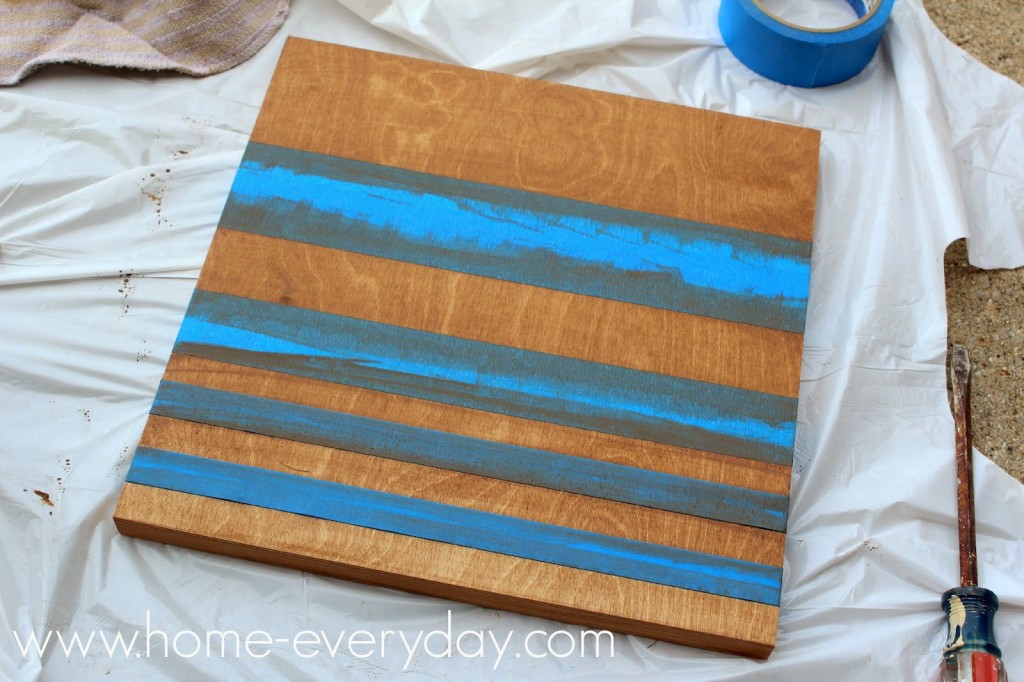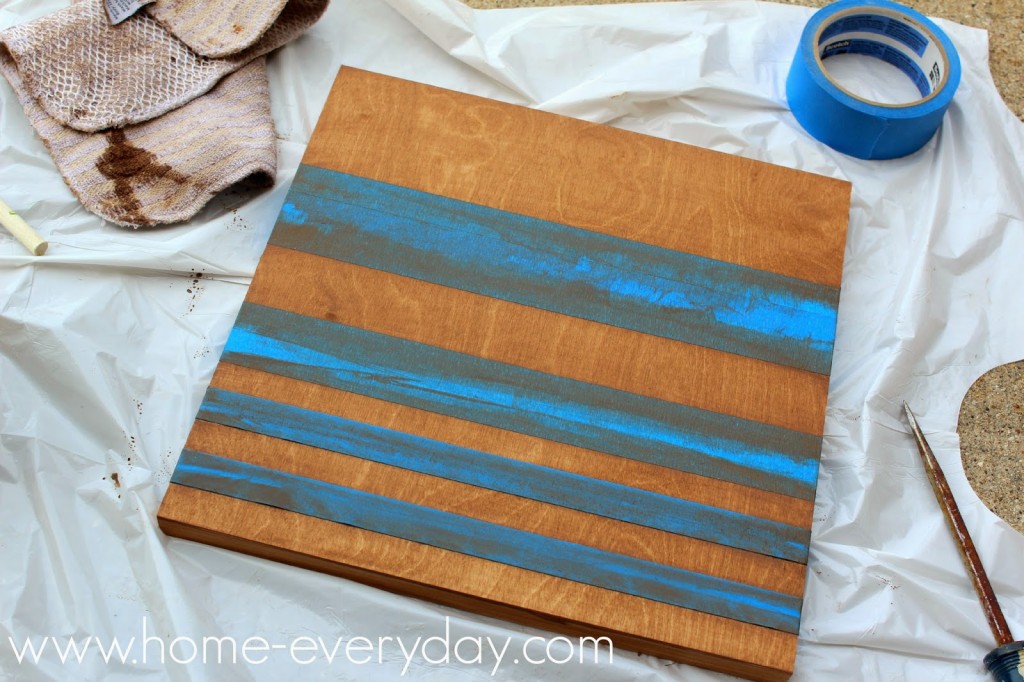We are already getting flyers about fire prevention week coming up in October. Which in addition to making sure the smoke detectors are checked, the fire extinguishers are up to date, making sure we reinforce fire safety with the kids like how to get out of the house and where to meet, I was also thinking I should probably knock something off my to do list that has been on there forever.
We need an address plaque on our house, and of course I wanted to make it myself.
We have our address on our mailbox, but I have always thought it would be a good idea to label the house too. It is better to be safe than sorry.
So, I went to my favorite place for inspiration. Pinterest.
I found a few ideas, and then decided to come up with a cost effective idea of my own, using a wooden canvas I was able to get on sale at Michael’s, leftover stain from the dining room table project, and stainless steal numbers from Home Depot.
I created a two tone address plaque that is good for any season. A DIY project and something that makes my family safe?! Awesome!
Supplies
12″ x 12″ wooden canvas
Acrylyic Wood Stain (Minwax Clear Base)
Painter’s Tape
Paint Brush or Old Rag
Metal Numbers with Screws (I used 4″ numbers that could be seen from the street.)
Hardware to Attach Plaque to House
Screwdriver
Drill
Drop Cloth
Step 1: Wipe off any dust or debris that might be on the wooden canvas. You want the surface completely clean for taping and staining.
Step 2: Tape off the pattern that you would like on your canvas. I did a random stripe pattern, but chevron or diagonal stripes would be fun too. NOTE: Make sure that you press the tape firmly into place as stain is watery and can seep under painters tape if not adhered firmly.
Step 3: Using a sponge brush or rag, gently apply stain according to manufacturers instructions. NOTE: The more coats of stain applied the richer and darker the color. I applied three coats, making sure to allow ample drying time between each coat.
Coat 1:
Coat 2:
Coat 3:
Step 4: After the stain has dried remove painters tape. Using a screwdriver drill carefully attach letters where you would like them using predrilled holes.
Step 5: Hang on your house in a place that is easily visible from the street. We hung ours near the front door.
What will you be doing to get ready for fire prevention week?
If you like this post and would like to read more about all things domestic with a touch of humor, become a Home Everyday follower! For blog updates or to see other places I write such as ChicagoNow or Chicago Parent follow Home Everyday on Facebook, Twitter, and Pinterest.
Linking up at Serenity Now (http://www.serenitynowblog.com) for Weekend Blog Reading and Home Stories A to Z (http://www.homestoriesatoz.com)

